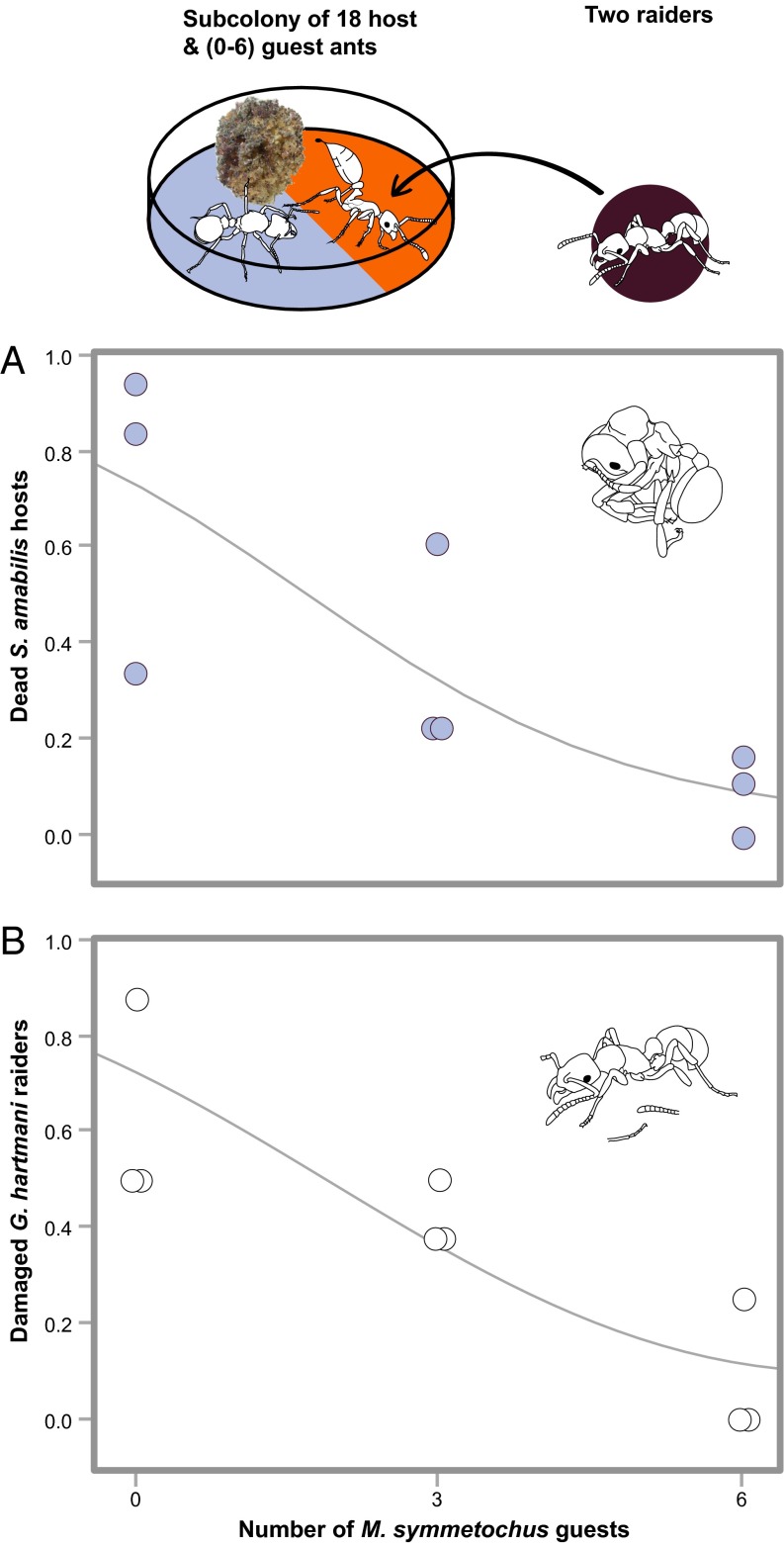Fig. 3.
Host survival rates and raider mutilations. When threatened, M. symmetochus guest ants use toxic venom, whereas Sericomyrmex hosts mutilate intruders by removing appendages. (A) When 18 host ants were confronted with 2 intruding Gnamptogenys workers without (0) or with (3 or 6) Megalomyrmex guest ants, the proportion of S. amabilis deaths was decreased (binomial GLZ, LR χ2 = 10.93, P = 0.0009). (B) The same increased number of guest ants was also associated with a reduced rate of extremity damage in G. hartmani workers (binomial GLZ, LR χ2 = 14.18, P = 0.0002), consistent with the fact that the agro-predator raiders were no longer attacked by S. amabilis defenders because they were killed by guest ants rather than by physical mutilation by the host ants. Ant drawings courtesy of Rozlyn Haley.

